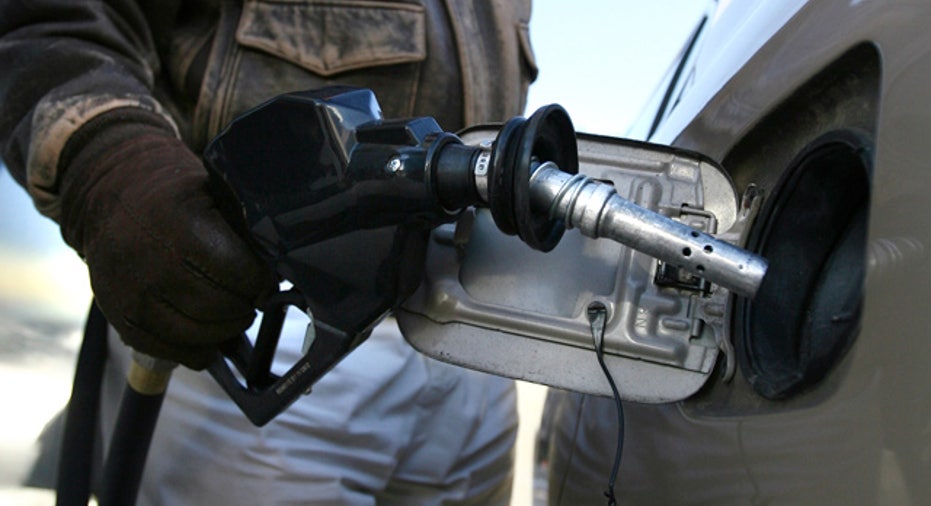Make Biodiesel, Fill Up at Your Own Pump

With gallon prices climbing dramatically, alternative fuels are starting to hold a greater appeal for a larger number of consumers. One alternative fuel is biodiesel, which is made from a renewable resource that can be homemade, and it is gaining greater traction. That's in part thanks to its very attractive price of less than $1 per gallon. But the prospect of making your own fuel is not without its cons. Here's a look at what's involved.
First, you must be fueling a diesel car with biodiesel. So if you don't own a diesel car, you'll need to buy one. Used diesel cars are widely available and the newest clean-diesels have been available in all 50 states since 2009.
Next, you'll need to create a system to make the fuel. If you're handy, there are several books and even classes at some colleges that teach you how to make your own equipment. There are several well-regarded companies that sell do-it-yourself kits for making biodiesel that range from $400 to $5,000 for kits that produce larger quantities, hold it in a storage tank and have a device similar to a gas pump to fuel a car.
Some of the equipment costs can be offset by the Alternative Fuel Vehicle Refueling Property Credit, which is a tax credit for up to 30 percent of the equipment costs for making alternative fuels at a primary residence for private use. Making biodiesel can be time-consuming, though the mid-level and higher-end kits reduce the amount of time required to as little as a few hours for as many gallons as the storage tank will hold.
Then, you'll need to decide what to make the biodiesel from. In the United States, professionally made biodiesel usually comes from soybean oil, but many do-it-yourselfers use yellow grease, which essentially is old restaurant cooking oil that they often get from local restaurants for free. While this greatly reduces the per-gallon costs, there can be issues with the quality of the end product, depending on how "clean" the oil is. Even so, the more expensive kits have built-in features to filter out more impurities and create a higher-quality product.
Pure biodiesel is known by the designation B100 or B99, meaning it is 100 percent or 99 percent biodiesel with the rest being petroleum diesel. Once you've produced biodiesel, you'll need to decide what percentage of it to use in your car. Since biodiesel is less fluid than petroleum diesel and can clog components such as fuel injectors, especially in colder temperatures, you'll want to do some research as to what percentage is best suited for your car, climate and type of driving.
Many drivers have been successfully using pure biodiesel in their cars for years with no reported adverse effects. If your car is still under warranty, keep in mind most automakers only offer warranties that accept blends of biodiesel and petroleum diesel of up to 20 percent biodiesel to 80 percent petroleum diesel. But for an automaker to refuse a warranty claim, it would have to prove the problem was caused as a result of using a higher percentage of biodiesel than is recommended.
Your cost savings of using biodiesel compared to petroleum diesel will be driven by what percentage of biodiesel you use in your car. The best-case scenario would be a cost of about 70 cents per gallon of pure biodiesel, which covers the cost of the other ingredients and assumes the primary ingredient -- the soybean or restaurant oil -- comes free or very cheaply. This per-gallon estimate does not include any equipment costs.
While the costs are attractive, making your own biodiesel requires a time investment and some startup costs, and there is likely to be a learning curve to create the best "recipe" based on the quality of the soybean or restaurant oil used. John O'Dell, Edmunds' senior green car editor, cautions against the process, saying, "You really need to know what you're doing, since impure biodiesel can grow bacteria, mold and fungus in your fuel lines and gas tank, costing thousands in repairs."
Environmental expert and author Jim Motavalli was less concerned about consumers making biodiesel, saying "the equipment isn't all that expensive or hard to assemble." But he still suggests that the best alternative for consumers may be to join a biodiesel collective, or group of home producers who make biodiesel for themselves and sell it to others in their local area. With these collectives, the cost is often about half the cost of buying petroleum diesel at a gas station, yet without any of the time and costs of making it yourself.



















